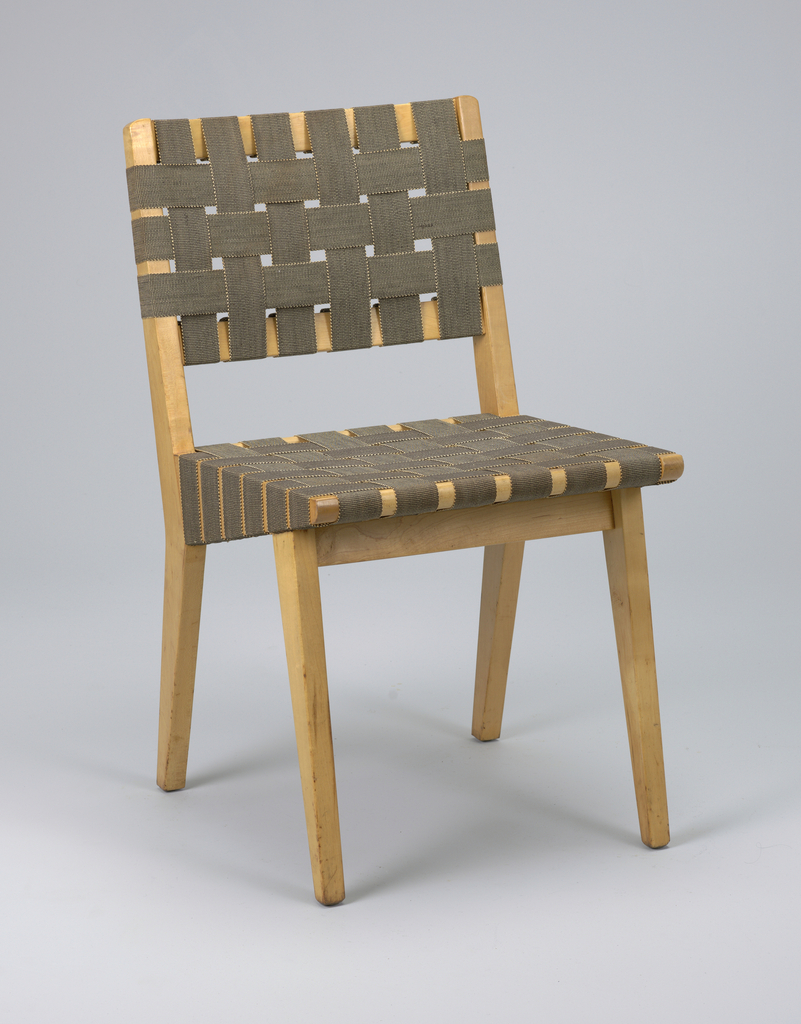In celebration of our new exhibition The Senses: Design Beyond Vision, this Object of the Day post explores the multisensory experience of an object in Cooper Hewitt’s permanent collection. Dieter Rams, Chief Design Officer for German consumer products manufacturer Braun AG from 1961-95, designed the neutral and unassuming L1 speaker in 1957. Influenced by Braun’s...
In a 1929 article for The Studio, Charlotte Perriand, the designer of this stool, wrote polemically about the advantages of using metal over wood, noting its utilitarian and aesthetic value. She said, “Metal plays the same part in furniture as cement has done in architecture. It is a Revolution.”[1] Her now-iconic B306 chaise longue made...
In celebration of Women’s History Month, March Object of the Day posts highlight women designers in the collection. This necklace was made by Ramona Solberg in the early 1970s. It was in her private collection, and until her death she was its only owner. The pendant is a simple interpretation of reliquary jewelry which usually...
When a piece of jewelry is made of natural materials such as this neckpiece designed by Liv Blåvarp, it forges a special connection with the wearer. There is something about natural substances that bring out feelings of sensuality and an intimate connection on a deeply primal level. When Blåvarp began making jewelry in 1984, she sought to make...
The Chinese Chair, designed by Hans J. Wegner and manufactured by Fritz Hansen Inc. of Denmark, represents a piece of Western furniture inspired by the design aesthetic of Eastern culture. Capturing the nature of Chinese furniture design, the chair features soft, sloping, and rounded armrests, giving the shape an organic quality. Made in cherry wood,...
Hans J. Wegner was a pioneer in modern Danish design in the 1950s and 1960s. Having designed more than 500 chairs throughout his career, with 100 of them being mass-produced, he has been affectionately known within the design world as the “Master of the Chair”. His ingenious use of natural materials, in particular his admiration...
The Model 666WSP Chair, from 1943, is an example of the furniture designed by Danish-American designer Jens Risom, who died at 100 on December 9, 2016. Risom was the son of a prominent Danish architect and he, himself, is often regarded as one of the founders of midcentury modern design in America. He came to...
Herman Miller introduced George Nelson’s Comprehensive Storage System (CSS) in 1959 and produced it until 1973. Available in a variety of wood finishes, the CSS could also be customized to fit the needs of customers, thanks to its modular units that included shelves, drawers, and desk units, such as the CSS in the museum’s collection....
This week’s entries are dedicated to objects featured in the exhibition Thom Browne Selects, currently on view at Cooper Hewitt through October 23, 2016. Hector Guimard, well known as a prolific French architect-designer, demonstrates a more refined style during Art Nouveau through his use of pearwood. It was of utmost importance to Guimard to emphasize...








